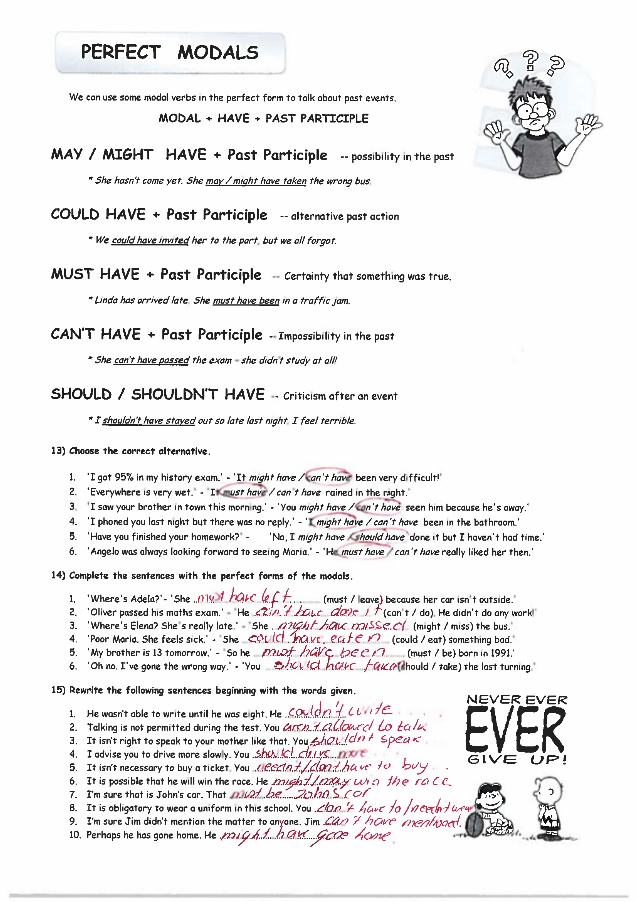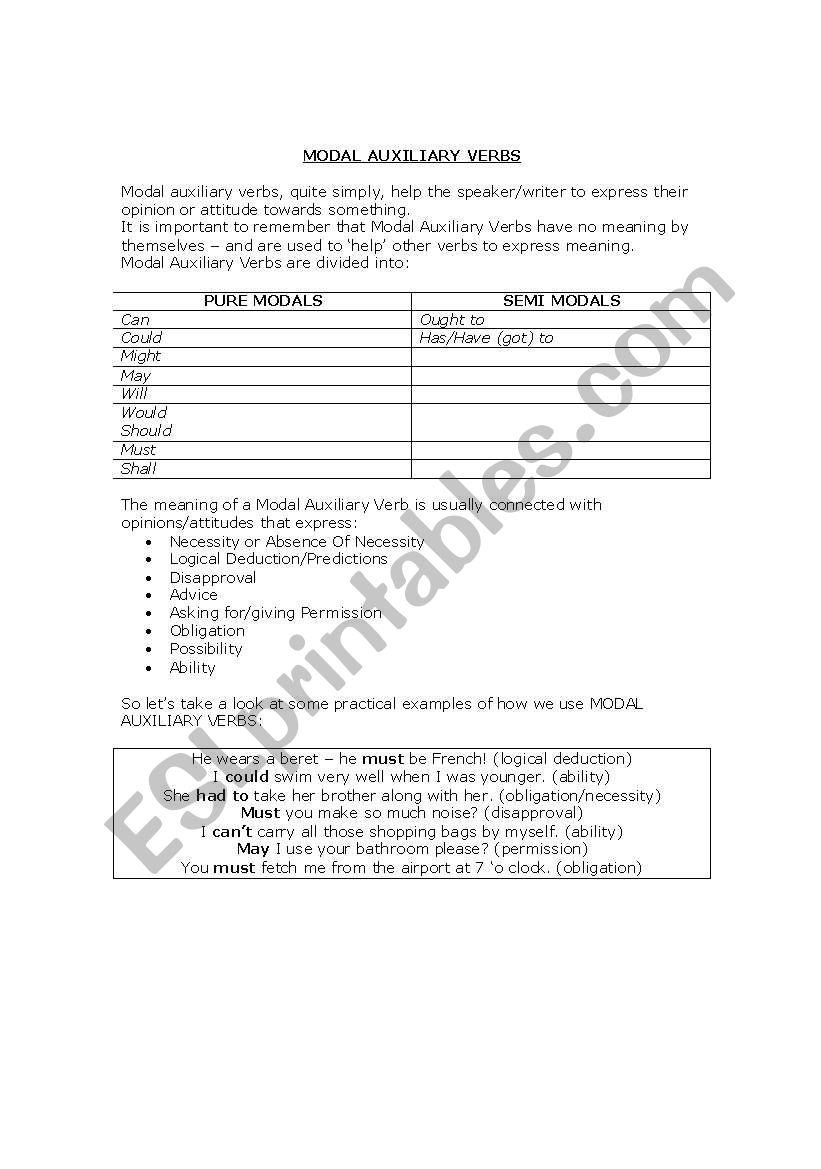

If you stayed here, you ………….not face the problem.

You ………………to go to Delhi tomorrow to attend the meeting. They ……………not read this book for this topic. …………….her soul rest in peace ! (Would/ May)ħ.

She came here so that she …………….( may/might) meet her child. Speak slowly lest you …………….awake the child. They would not have enough space to keep you as well.3. You would be healthier if you exercise more. He will not tolerate any more of the drama. She knew that love shall not be compared. You shall say your prayers before you eat. I ought to care less about people's opinions. You must not laugh at her vulnerabilities. Here are some examples of modal auxiliaries in mainstream texts: These are the standard modal auxiliaries. They can refer to present or future time in their normal form. They do not have an "ing", "ed", or "es" form. Modal auxiliaries differ from ordinary verbs in a way that they have no inflections. These verbs are always followed by an infinitive verb in a sentence and no other verb can come after these modal verbs. This means that these verbs do not give an indication about the structure of sentence being plural, singular, past, present, or future. These modals cannot be changed by adding inflections like other verbs that undergo a change after addition of inflections like -ing, -ed, -es, etc. The clarity of a sentence and its grammatical correctness depends on these verbs to a great extent and sometimes their absence makes the sentence lose its clarity, making it really difficult for the readers to understand what the statement is trying to covey.Īuxiliary verbs or helping verbs are unique in a sense that they do not have multiple forms of verbs unlike other verbs that usually exist in more than one form. They are used to predict possibilities, necessities, and permissions. Modal auxiliaries have the capability to change the meaning of the simple verb. It is also sometimes called the verb of prediction as it sets the tense and mood of a sentence. A modal auxiliary verb is a verb that is used to set the mood and tense for other verbs in a sentence.


 0 kommentar(er)
0 kommentar(er)
